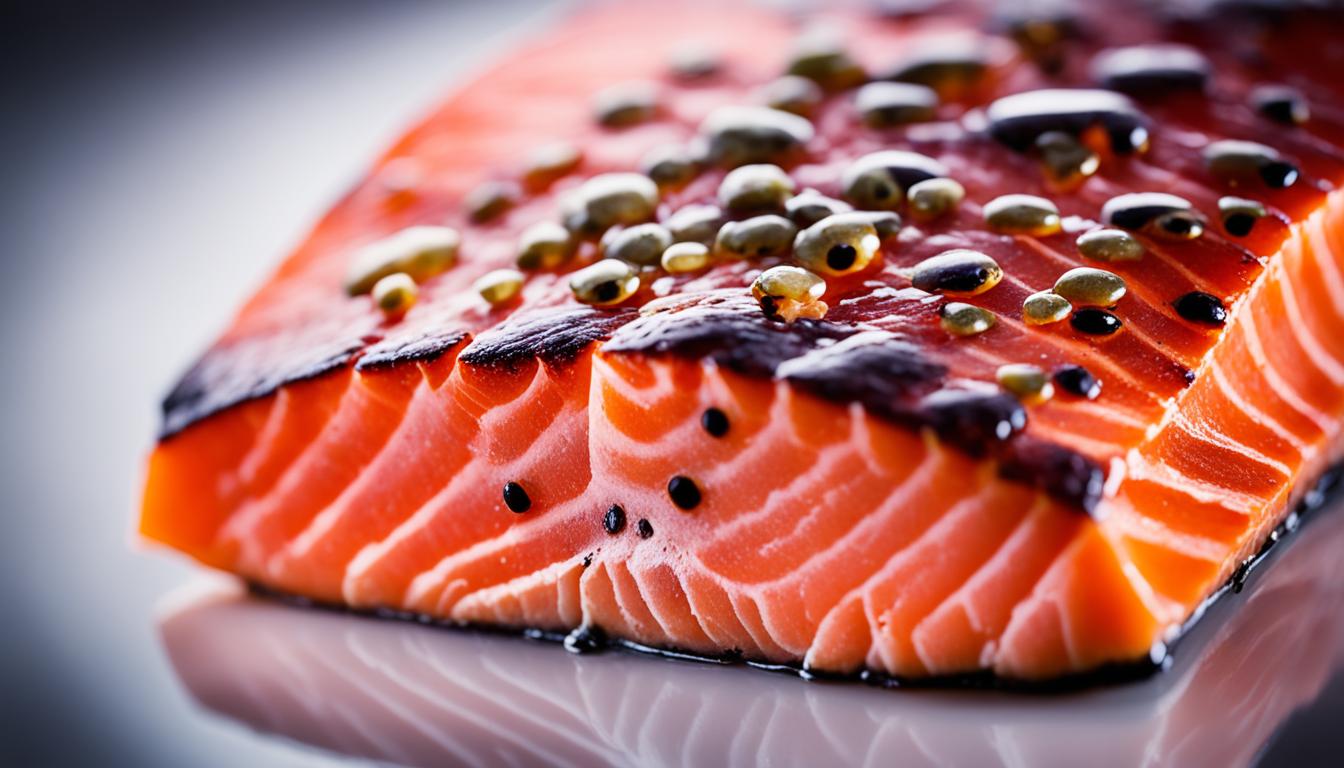Salmonellosis comes from eating food with Salmonella bacteria. It causes problems like diarrhea, stomach pains, and high fever. In bad situations, it can even lead to serious illnesses like septicemia.
To find out if someone has salmonellosis, doctors test their stool or blood. Usually, care is about staying hydrated and getting enough rest. Yet, treating with stem cells is showing new hope. Stem cells can help our body fight the infection and heal faster.
It’s better to avoid getting sick than to treat the disease. You can do this by being careful with food, cooking it well, and keeping clean. These actions lower the chances of catching Salmonella.
Key Takeaways:
- Salmonellosis is a foodborne illness caused by the Salmonella bacteria.
- Symptoms of salmonellosis include diarrhea, abdominal cramps, and fever.
- Salmonellosis can lead to complications such as septicemia and enteric fevers.
- Diagnosis involves isolating Salmonella organisms from clinical specimens.
- Treatment for salmonellosis usually involves supportive care, but stem cell therapy shows promise.
Salmonellosis Symptoms and Clinical Manifestations
Salmonellosis shows up in several ways, based on how bad the infection is. The usual type is gastroenteritis. This causes feelings like nausea, vomiting, and stomach pain along with a fever. If it gets worse, it could lead to enteric fevers like typhoid, a serious illness that affects the whole body.
The symptoms of enteric fevers include a very high fever, not wanting to eat, headaches, muscle pain, and not being able to go to the bathroom easily. Gastroenteritis symptoms tend to get better in a week, but enteric fevers need quick treatment with antibiotics to avoid getting worse.
Salmonellosis Symptoms:
- Nausea
- Vomiting
- Diarrhea
- Abdominal pain
- Fever
- High fever (in enteric fevers)
- Anorexia (in enteric fevers)
- Headache (in enteric fevers)
- Myalgias (in enteric fevers)
- Constipation (in enteric fevers)
It’s key to remember that symptoms can change a lot person to person or based on the type of Salmonella.
| Type of Salmonellosis | Key Symptoms |
|---|---|
| Gastroenteritis | Nausea, vomiting, diarrhea, abdominal pain, fever |
| Typhoid Fever | High fever, anorexia, headache, myalgias, constipation |
Salmonellosis Causes and Pathogenesis
Salmonellosis is a common foodborne illness caused by the Salmonella bacteria. These bacteria can survive in the stomach’s acidic conditions. Once in the intestines, they cause an inflammatory reaction. This leads to symptoms like diarrhea and stomach pain.
The bacteria create toxins, adding to the body’s inflammatory response. Their lipopolysaccharide coat helps them spread and stay harmful.
Salmonellosis starts in the gut but can affect the whole body. It can move beyond the intestines and cause serious illness.
Our immune system fights salmonellosis. It works to remove the bacteria and stop the infection from getting worse.
Host Defenses Against Salmonellosis
- Our body’s barriers like skin and mucous membranes keep bacteria out.
- Special immune cells like macrophages and T cells help fight off Salmonella.
- Macrophages break down the bacteria and start the body’s defense response.
- T cells and B cells target Salmonella’s specific parts to kickstart the immune attack.
Learning about salmonellosis helps scientists find ways to prevent and treat it. This knowledge is key in stopping the spread of the disease.
Conclusion
Salmonellosis is a well-known illness from food that can be severe. The main way to deal with it right now is supportive treatment. Yet, there’s new hope in using stem cell therapy.
Stem cells may help fix damaged parts and balance the body’s immune system. This could speed up the healing from salmonella. But, we still need more studies to be sure this therapy works well and how to use it best.
Stopping salmonellosis from happening is very important. This means being careful with how we handle and cook our food. It also means keeping our living spaces clean. Doing these things can lower the chance of getting sick from salmonella.
Keeping up with research is vital for beating salmonellosis. By figuring out how it works, we get closer to ways of stopping it. This hard work might bring us new medicines, vaccines, and tests. These can really help fight salmonellosis.
To do all this, scientists, doctors, and leaders need to work together. Their teamwork helps keep research in salmonellosis moving forward. This is how we get closer to a world without salmonellosis.

